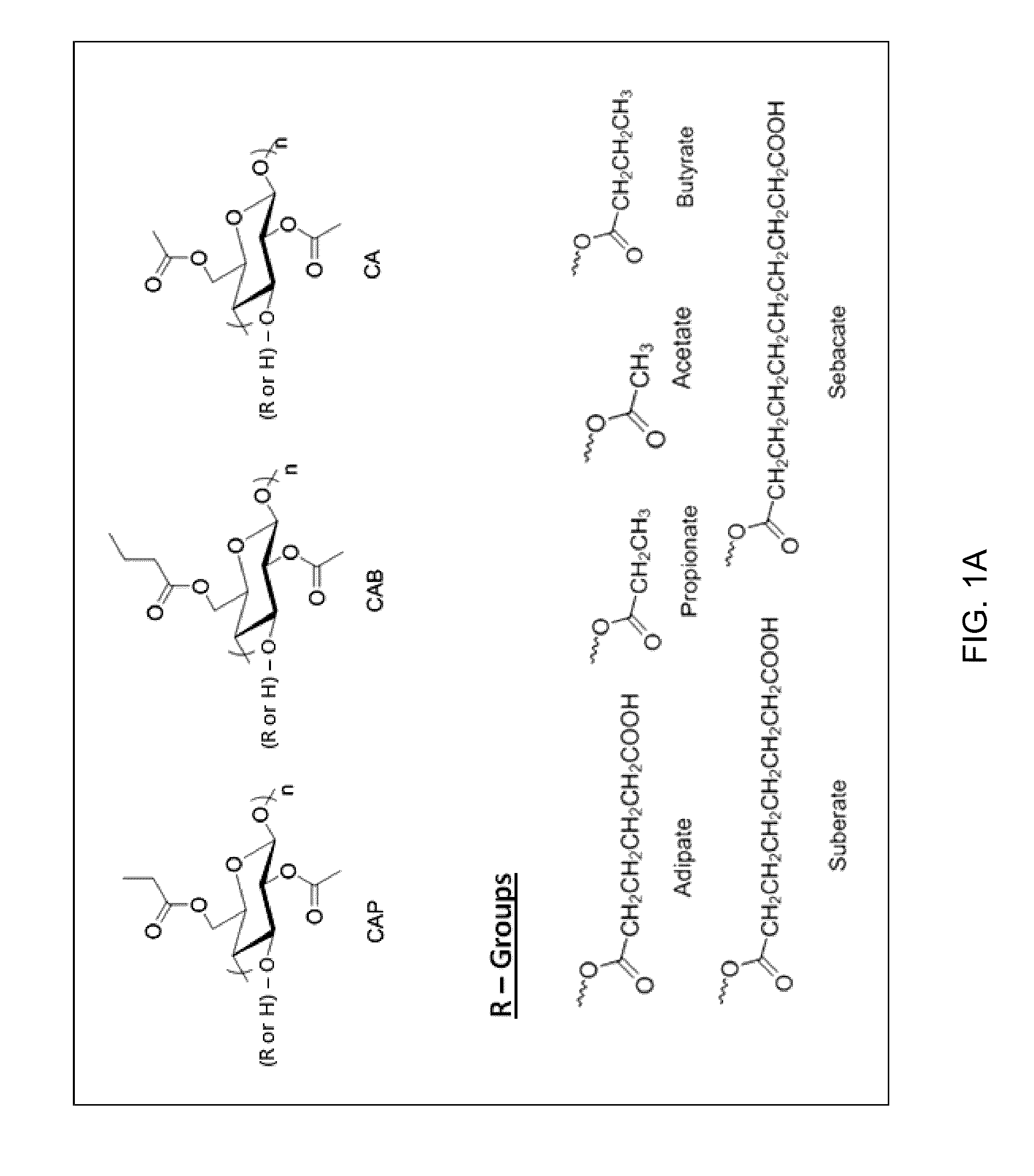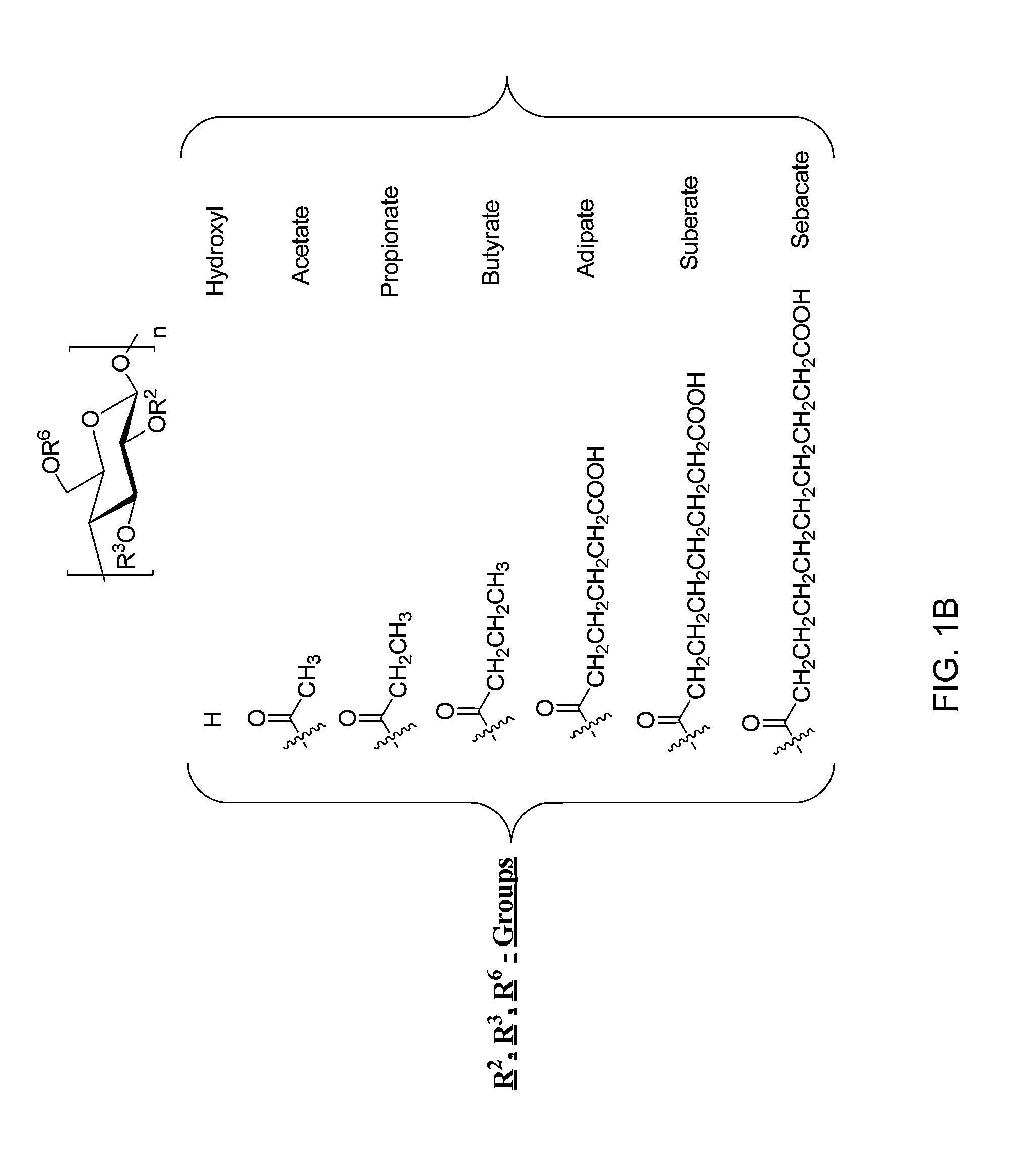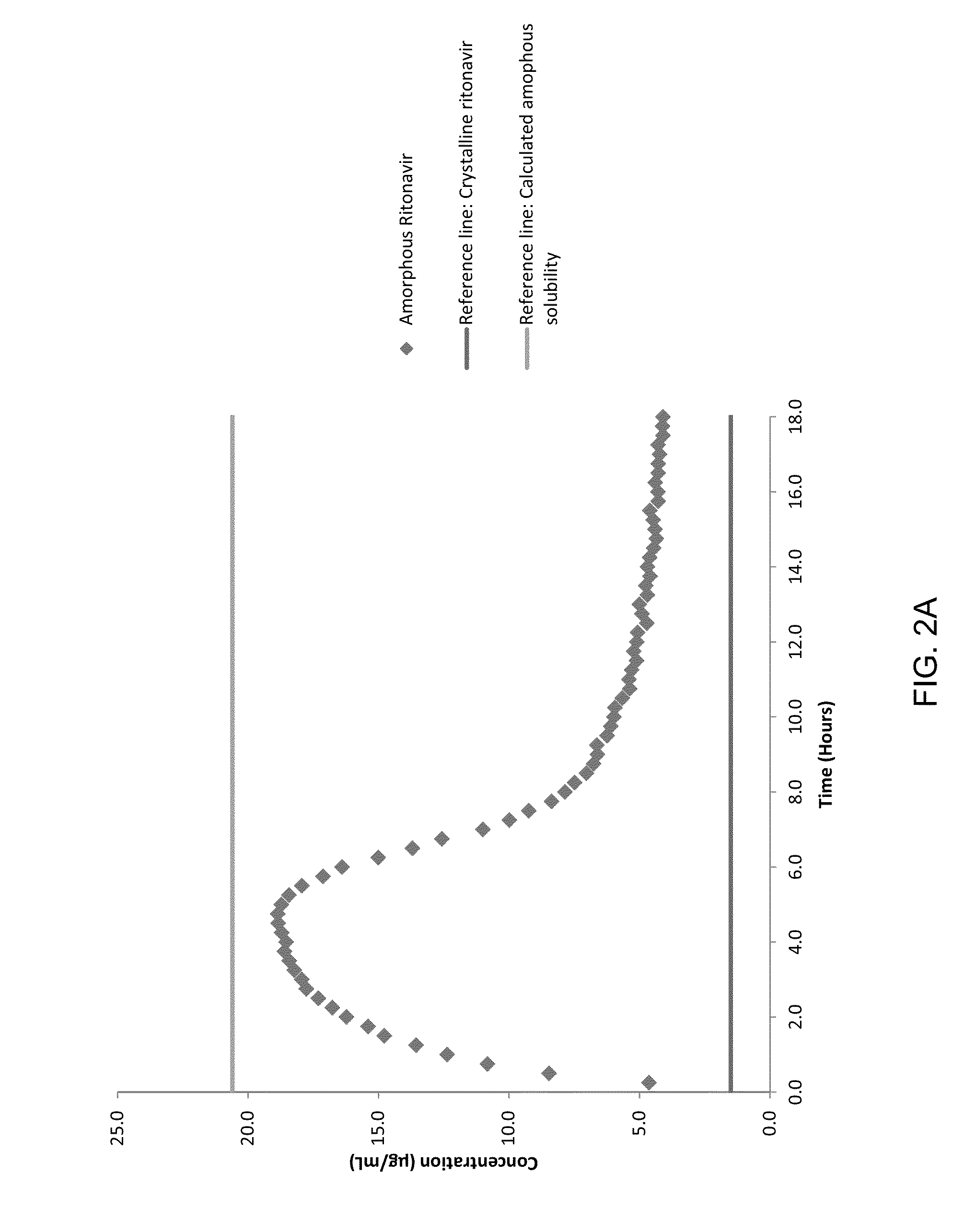Cellulose derivatives for inhibiting crystallization of poorly water-soluble drugs
a technology cellulose derivatives, which is applied in the field of cellulose derivatives for inhibiting crystallization of poorly water-soluble drugs, can solve the problems of erratic fraction of the overall dose that is absorbed, the drug dissolution step is the rate-limiting process for absorption, and the low aqueous solubility compounds suffer from limited bioavailability, etc., to achieve enhanced aqueous solubility, enhance drug solubility and thus bio
- Summary
- Abstract
- Description
- Claims
- Application Information
AI Technical Summary
Benefits of technology
Problems solved by technology
Method used
Image
Examples
example i
Ritonavir Compositions
[0077]Large crystal lattice energy / high melting point and, high and positive octanol-water partition coefficient (Log P) are some of the underlining factors causing poor aqueous solubility. To demonstrate the effectiveness of various polymers, a model drug compound with low aqueous solubility, ritonavir, an HIV protease inhibitor, was tested. The drug-polymer systems of embodiments of the invention enable the inhibition of the nucleation and crystal growth stages of crystallization from supersaturated solutions. Stable solutions can be obtained using drug compounds having slow crystallization tendency, such as ritonavir, in combination with polymers, including for example cellulose derivatives provided herein, which are characterized by a wide range of substitution groups and different degrees of substitution.
[0078]Ritonavir, a general chemical structure for which is shown below, was purchased from Attix Corporation, Toronto, Ontario, Canada:
[0079]The commercia...
example ii
Ellagic Acid Compositions
[0206]Ellagic Acid (EA):
[0207]is a polyphenolic flavonoid present in many dietary sources including walnuts, pomegranates, strawberries, blackberries, cloudberries and raspberries. It has been found that EA has important beneficial health effects against many oxidation-linked chronic diseases. Among the most important examples are cancer, including breast cancer, prostate cancer, lung cancer, and colon cancer, cardiovascular disease, and neurodegenerative diseases. The poor oral bioavailability of ellagic acid, however, is a great challenge for the study of its beneficial functions, making it difficult to translate in vitro results into in vivo studies. In addition, it has been estimated that the average individual consumes approximately 343 mg EA per year, which is not enough to reach the plasma levels required for lung cancer prevention, given its low bioavailability. Poor EA aqueous solubility (9.3 μg / ml at pH 7.4) is a primary cause for its low bioavaila...
example iii
Resveratrol Compositions
[0229]
[0230]Resveratrol (Chemical Abstracts Service Registry Number CAS 501-36-0) is a phytochemical of great current interest. The compound is found in nature as both cis and trans isomers, however, the trans isomer is believed to be the most abundant and biologically active form. Resveratrol has been suggested to possess antiplatelet, antioxidative, antifungal, anticancer, and cardioprotective properties. In addition, resveratrol has been shown to increase the life span in several species including yeast cells by acting as a calorie restrictor by stimulating SIRT1-dependent deacetylation of p53. Resveratrol is moderately hydrophobic (log P 3.1) but has poor aqueous solubility, in large part due to its high melting point of 262° C. and strong crystal lattice energy. Consequently, amorphous formulation of this compound is of great interest, as substantial improvements in dissolution rate and transient solubility should be achieved. Resveratrol is a particular...
PUM
| Property | Measurement | Unit |
|---|---|---|
| solubility | aaaaa | aaaaa |
| time | aaaaa | aaaaa |
| pH | aaaaa | aaaaa |
Abstract
Description
Claims
Application Information
 Login to View More
Login to View More - R&D
- Intellectual Property
- Life Sciences
- Materials
- Tech Scout
- Unparalleled Data Quality
- Higher Quality Content
- 60% Fewer Hallucinations
Browse by: Latest US Patents, China's latest patents, Technical Efficacy Thesaurus, Application Domain, Technology Topic, Popular Technical Reports.
© 2025 PatSnap. All rights reserved.Legal|Privacy policy|Modern Slavery Act Transparency Statement|Sitemap|About US| Contact US: help@patsnap.com



